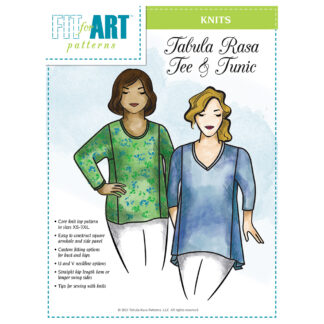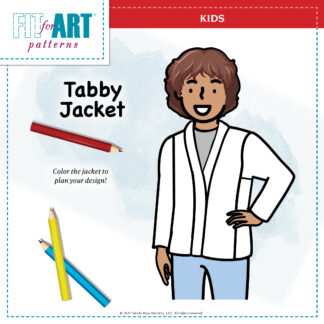
When we first launched the Eureka! Pants that Fit pattern in 2013 we wrote lots of directions about adjusting the back crotch curve for a neat and clean fit. If you are familiar with our pattern you know that there are 3 backs in every size to make that process easier. Toward the end of the crotch curve section in the direction book there is a sentence that says, you can use the techniques for the back curve to also adjust the front curve. While that statement is true, it seems that the magic sauce between the front and back curves, personalized for fit, is what makes the best pants.

As I have been fitting pants this spring in the expo setting, on retreat, for Carrie and for a friend, it seems like we are spending lots of time adjusting the front crotch curve. So here is an up-close look at my friend Donna Sue’s pants and this very common adjustment we are making lately on lots of pants. The trick with this adjustment is that many women have a little tummy that must be accommodated above the curve of the pants. It is essential to keep the grainline straight in the front as you fit the pant over the tummy and then down into the hollow that becomes the crotch curve. (Read about keeping the back grainline straight in this previous post Grainlines on Pants are so Important.)

Start with a Mock Up or Fit for Art’s Sample Pants
This pants journey started with a fitting in our pre-made pants mock up. The sample pair is brown, indicating that it is one of our Back 3 mockups, which means it has the deepest crotch curve of our three options. (Read about the three different back options in our previous post Why Eureka!) You can see that the front curve has been pinched and pinned out without skewing the front grainlines.

While it seems counter intuitive, this adjustment makes the crotch curve and crotch extension longer, making it necessary to trim away some of the extension in the front to pull the pants closer to the body for a snug fit. These pants will not be form fitting as they are being developed for a mother of the bride outfit. However, if this additional extension is not taken away, the pants will develop a bubble of excess fabric in the front.

Sew a Personalized Mock Up
I did some pattern adjustment for the first fitting and made a mock up. The difference between the pant sample fabric which is very stiff, and the softer mock up fabric meant that I needed to take out even more all down the front of the pants and shorten the extension once again.

Adjust the Personalized Mock Up
These changes were first sewn in, then tested on the body before making the adjustments to the pattern.


Small incremental changes to a pants pattern allow for a very nuanced fit, so as often is the case in sewing, slow and steady wins the pants fitting race.

An additional correction that led to this improved fit is that the waistband was lowered to position the pants in the area of the body that allows for a naturally secure waist finish.

The side seams were also adjusted to smooth the fabric as it moves down the leg. The test fit also included sitting in the adjusted pants to confirm that all these adjustments worked together for a well-fitting pant.
Notes on Making More Form Fitting Pants
If a very snug fit was desired, which is not the case for these pants, switching to fabric with some spandex allows the pant to be pulled even closer to the body in the inseams and the side seams. Read about adjusting the Eureka! Pant into skinny pants with spandex fabric in this post Narrow Eureka Pants.
One Important Sewing Tip for a Smooth Crotch Curve
Here is one more pant construction tip to assure the pants hang and fit well. It was a question that came up at our retreat so I thought I would share these photos with you to illustrate the point. When you join the inseams on the Eureka! Pants and most other pants, the back will extend up above the 5/8” join and the front will dip down below the 5/8” join. This is accurate, as long as they match up at the seamline.



The angle of each inseam makes it too difficult to create trued seam allowances in this area of the garment. When you put the two inseams together into the continuous crotch curve, allow them to naturally angle up and down; don’t try to move the seam allowances to sit evenly along the seam allowance of the curve.

Pants that fit are an ongoing process since our fit preferences and our body shape can change over time. Be sure to wear the test pants for a while before making additional changes. That is the only way to discover the true nature of the fit. Carrie is in the process of developing a new pants pattern so stay tuned. She will be sharing some of that process with you soon in this blog. (You can read about new pants for our friend Edye in the post Pants for a Changing Body.)
Happy Sewing, RAE







Thanks so much for all the tips & tricks for pant fitting. So very helpful!
Seems like a while since we wrote about pants, but the archive is full of great info too. Thanks for reading.
Finally, photos of correct crutch curve fit!
This is what we are striving for.
The trick, of course is everyone has a different personal curve. We aim to give you the tools and always wish you Good luck!
I’m having difficulty in seeing the details. Is it possible to do a mock up in a fabric and contrasting thread for more obvious presentation of the seams?
I will try to remember that when I make a new mock up. It is certainly a good suggestion.
Glad to see I’m not the only one needing exactly this kind of front adjustment!